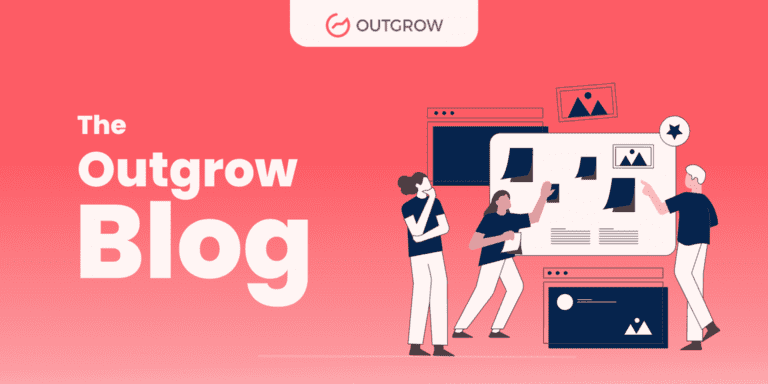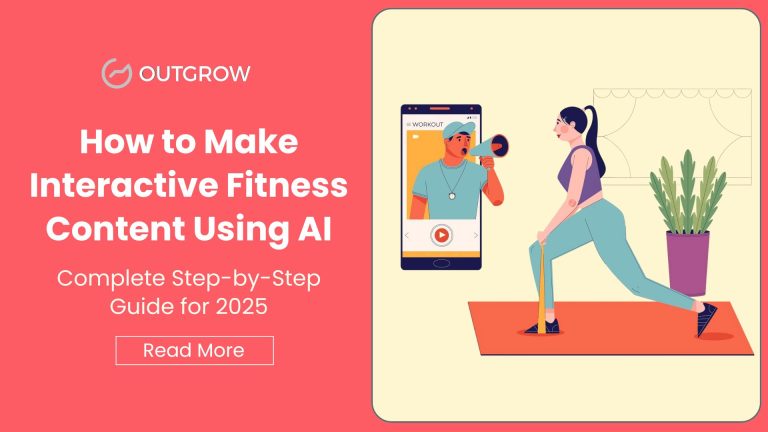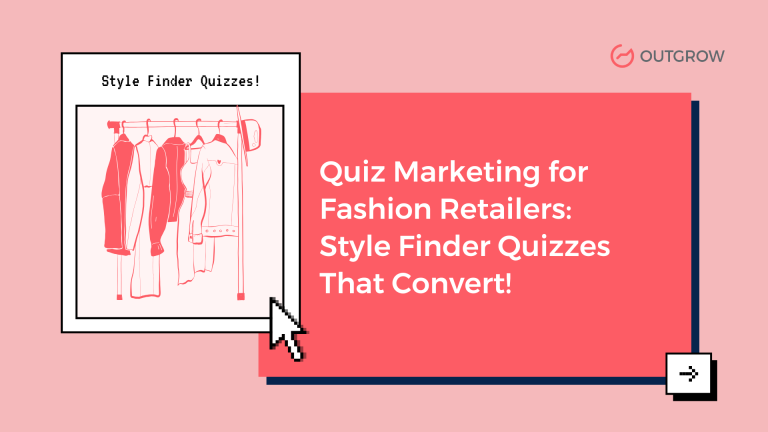What Is a Funnel: Complete Guide to Marketing, Sales & Business Funnels
Introduction
Table of Contents
What is a funnel? A funnel is a strategic framework that visualizes the first awareness of the final conversion and beyond the customers’ journey. In business and marketing contexts, a funnel represents the systematic process of guiding potential customers through different stages, designed to transfer opportunities for a purchase or desired action with each step.
Understanding what a funnel is and how it works is important for companies to adapt customers’ procurement, improve the conversion frequencies and create permanent growth. Whether you are looking for a funnel in marketing, what is a sales funnel, or what a funnel in digital marketing, this detailed guide covers everything you need to know about their funnel and applications.
What Is a Funnel in Business?
A business funnel is a model that represents the customer journey from first contact to final sales and customer retention. The funnel form shows how a large number of potential customers gradually go down to a small number of real buyers at the bottom.

The concept of what is a funnel in business includes many important key elements:
- Customer Journey Mapping: How Tracking Opportunities go through different stages
- Conversion Optimization: Maximizing the percentage of those who go from one step to another
- Resource Allocation: Determining where to invest marketing and sales efforts
- Performance Measurement: Identifying obstacles and areas for improvement
Professional funnel companies help understand customer behavior, adapt their processes and eventually increase revenue by reducing costs for customer acquisition and improving the conversion rates.
What Is a Funnel in Marketing?
A marketing funnel is a strategic structure that maps the final conversion from the first brand awareness to final conversion and beyond. Marketing funnels analyze ways of conversion and beyond, companies tell what they should do to influence consumers in some stages.
The Main Components of Marketing Funnels
Understand what is a funnel in marketing, this means recognizing the main components:
1. Consciousness Phase (Top of Funnel – TOFU)
- Potential customers detect your brand
- Content marketing materials, social media, SEO, and advertising awareness
- Goal: Attract more and more qualified opportunities
2. Interest Phase (Middle of Funnel – MOFU)
- The prospects connect to your content and know about your offers
- Email marketing, webinars, and educational material nutritional interest
- Goal: Create relationships and establish confidence
3. Consideration Stage
- Views evaluates your solution against participants
- Case studies, product demos, and advisory proof provides
- Goal: Keep your brand as the best option
4. Conversion Stage (Bottom of Funnel – BOFU)
- Prospects make a purchase decision
- Sales calls, suggestions and special offers to drive conversion
- Goal: Turn on opportunities with customers who pay
5. Retention and Advocacy
- Existing customers receive ongoing value
- Customer success program and loyalty maintain relationship
- Goal: Encourage the purchase of repetition and referral
What Is a Digital Marketing Funnel?
A digital marketing funnel is a step-by-step process that uses business awareness, discovery, thoughts, conversions and storage to guide potential customers through different stages of storage.
Digital Marketing Funnel Stages
Digital marketing funnels utilizes online channels and technologies to guide the possibilities through the customer journey:
Awareness Stage
- SEO (Search engine optimization)
- Pay-per-click (PPC) advertising methods
- Social media marketing (Organic & Paid)
- Content marketing with interactive booster elements like quizzes, calculators, polls, surveys, etc.
- Display advertising
Interest Stage
- Email marketing outreach campaigns
- Social media engagement booster
- Blog content and interactive resources
- Video marketing
- Live Webinars and online events
- Interactive calculators and assessment tools
Consideration Stage
- Retargeting ads
- Personalized email sequences
- Product demonstrations and interactive demos
- Customer testimonials
- Comparison guides and ROI calculators
Conversion Stage
- Interactive landing pages with embedded calculators and assessments
- E-commerce platforms
- Lead capture forms with progressive profiling
- Online checkout processes
- Personalized call-to-action buttons according to user behavior
Retention Stage
- Email marketing automation
- Customer relationship management (CRM)
- Loyalty programs
- Social media communities
- Customer support systems
What Is a Sales Funnel?
A sales funnel is a systematic process that guides potential customers from first contact to final sales. The sales funnel consists of elements such as cell pages, order page, upselling page, “thanks” page and any other page that directly affects the actual conversion phenomenon.
Sales Funnel Components
Understanding what is a sales funnel involves recognizing its key components:
Lead Generation
- Draw potential customers through various marketing channels
- Capture contact information through interactive materials such as quiz, calculator and assessments
- Qualifying leads based on specific criteria and engagement data
Lead Nurturing
- Construction of conditions through personal communication
- Provides valuable materials and resources
- Addressing objections and concerns
Sales Process
- Conducting discovery calls and needs assessments
- Presenting solutions and proposals
- Handling objections and negotiating terms
Closing
- Finalizing purchase decisions
- Processing transactions
- Onboarding new customers
Upselling and Cross-selling
- Offering additional products or services
- Maximizing customer lifetime value
- Building long-term relationships
What Is a Sales Funnel in Marketing?
A sales funnel in marketing combines marketing strategies with sales processes to create a spontaneous customer journey. This integrated approach ensures that the marketing effort supports sales results directly while maintaining messages throughout the funnel.
Integration Benefits
- Aligned Messaging: Consistent brand communication across all touchpoints
- Improved Lead Quality: Better qualification of opportunities before sales engagement
- Low Sales Cycle: More educated opportunities ready to buy
- Higher Conversion Frequency: Custom procedures that reduce friction
- Better ROI: More efficient use of marketing and sales resources
Types of Funnels
What Is a Conversion Funnel?
A conversion funnel focuses on leading a visitor or app user through a series of steps or tasks, and ending in a desired result, such as buying or registering for service
Conversion funnels focus specifically on:
- Website optimization
- User experience improvements
- A/B testing different elements
- Reducing abandonment rates
- Increasing conversion rates
What Is a Click Funnel?
A click funnel offers a digital-specific approach to run online conversions, focusing on creating a series of web pages designed to lead visitors against a specific action.
Click funnels typically include:
- Landing pages with compelling headlines
- Lead capture forms
- Product pages with detailed descriptions
- Shopping cart and checkout processes
- Thank you and upsell pages
What Is a Search Funnel?
A search funnel represents the customer journey through search engines, from preliminary keyword research to final conversion. It helps funnel companies to understand how the opportunities use the search engine to find solutions and buy decisions.
Search funnel stages include:
- Awareness: Informational searches
- Research: Comparative searches
- Consideration: Brand-specific searches
- Purchase: Transactional searches
Funnel Examples and Applications
What Is a Funnel Example?
Here are several real-world funnel examples across different industries:
E-commerce Funnel Example
- Awareness: Customer discovers brand through an interactive quiz about their style preferences
- Interest: Takes a product recommendation quiz and subscribes to email list
- Consideration: Uses a size calculator and reads product reviews
- Purchase: Receives personalized product recommendations and completes purchase
- Retention: Engages with post-purchase surveys and loyalty program calculators
SaaS Funnel Example
- Awareness: Prospect discovers software through a “Which Tool Is Right for You?” quiz
- Interest: Downloads a free ROI calculator and productivity assessment
- Consideration: Uses an interactive demo and cost comparison calculator
- Purchase: Receives personalized pricing based on assessment results
- Expansion: Engages with feature recommendation quizzes and usage assessments
B2B Service Funnel Example
- Awareness: Potential client attends a webinar
- Interest: Downloads a case study
- Consideration: Schedules a consultation call
- Purchase: Signs a service agreement
- Retention: Receives ongoing account management
What Is a Funnel Used For?
Funnels serve multiple purposes in business:
Customer Acquisition
- Attracting new prospects
- Converting visitors into leads
- Nurturing leads into customers
Revenue Generation
- Increasing sales conversion rates
- Maximizing customer lifetime value
- Identifying upselling opportunities
Business Optimization
- Identifying bottlenecks in the customer journey
- Improving marketing ROI
- Streamlining sales processes
Customer Experience
- Providing relevant content at each stage
- Reducing friction in the buying process
- Personalizing interactions
Advanced Funnel Concepts
What Is a Sales Funnel Analysis?
Sales funnel analysis checking each step in the funnel to identify opportunities for improvement. This process includes:
Metrics to Track
- Conversion rates between stages
- Cost per acquisition (CPA)
- Customer lifetime value (CLV)
- Time to conversion
- Abandonment rates
Analysis Methods
- Cohort analysis to track customer behavior over time
- A/B testing different funnel elements
- Customer journey mapping
- Retention analysis
What Is a Good Funnel Conversion Rate?
Conversion rates vary greatly according to industry, funnel stages and business models. However, the general scale includes:
Lead Generation Funnels
- Landing page conversion rate: 2-5%
- Email open rate: 20-25%
- Email click-through rate: 3-7%
E-commerce Funnels
- Website conversion rate: 2-4%
- Cart abandonment rate: 60-70%
- Email campaign conversion rate: 1-3%
SaaS Funnels
- Free trial conversion rate: 15-20%
- Visitor to trial conversion: 1-3%
- Trial to paid conversion: 10-25%
What Is a Funnel Chart?
A funnel chart is a visual representation that reflects the progressive lack of data as it moves through different stages of a process. In business contexts, funnel charts help visualize:
- Conversion rates at each stage
- Drop-off points in the customer journey
- Areas that need optimization
- Performance comparisons over time
Specialized Funnel Types
What Is a Funnel Cloud?
Although not directly related to marketing, a funnel cloud is a meteorological phenomenon. However, in commercial contexts, “funnel cloud” can refer to cloud-based tract analysis or funnel control platforms that help companies to track and adapt the marketing and sales tracts.
What Is a Funnel Cake?
A funnel cake is a popular fair food made through a funnel by putting the bat in hot oil, making a spiral pattern. While the business funnel is not related, the word sometimes appears in the search results because of its popularity and shared words “funnel”.
Building Effective Funnels
Planning Your Funnel Strategy
1. Define Your Target Audience
- Create detailed buyer personas
- Understand customer pain points
- Identify preferred communication channels
2. Map the Customer Journey
- Identify all touchpoints
- Understand decision-making factors
- Recognize potential obstacles
3. Choose the Right Funnel Type
- Consider your business model
- Evaluate your resources
- Select appropriate channels
4. Create Compelling Content
- Develop stage-appropriate messaging
- Design engaging visuals
- Write persuasive copy
5. Implement Tracking and Analytics
- Set up conversion tracking
- Monitor key performance indicators
- Establish regular review processes
Optimizing Funnel Performance
A/B Testing
- Test different headlines and copy
- Experiment with design elements
- Try various calls-to-action
Personalization
- Segment your audience
- Tailor content to different personas
- Use dynamic content delivery
Automation
- Implement email marketing automation
- Set up lead scoring systems
- Create workflow triggers
Continuous Improvement
- Regularly analyze performance data
- Gather customer feedback
- Stay updated on industry trends
Common Funnel Challenges and Solutions
Challenge 1: Low Conversion Rates
Solutions:
- Improve landing page design
- Optimize call-to-action buttons
- Reduce form friction
- Enhance value propositions
Challenge 2: High Customer Acquisition Costs
Solutions:
- Focus on organic marketing channels
- Improve targeting precision
- Optimize conversion rates
- Implement referral programs
Challenge 3: Poor Lead Quality
Solutions:
- Refine targeting criteria
- Improve lead qualification processes
- Create more specific content
- Use progressive profiling
Challenge 4: Long Sales Cycles
Solutions:
- Provide more educational content
- Implement lead nurturing campaigns
- Offer social proof and testimonials
- Simplify the decision-making process
Measuring Funnel Success
Key Performance Indicators (KPIs)
Awareness Stage KPIs
- Website traffic
- Social media reach
- Brand awareness surveys
- Content engagement rates
Interest Stage KPIs
- Email subscribers
- Content downloads
- Time on site
- Page views per session
Consideration Stage KPIs
- Demo requests
- Consultation bookings
- Comparison page visits
- Case study downloads
Conversion Stage KPIs
- Sales conversion rates
- Average order value
- Customer acquisition cost
- Revenue per customer
Retention Stage KPIs
- Customer lifetime value
- Retention rates
- Upsell/cross-sell rates
- Net promoter score
Analytics Tools
Google Analytics
- Track website behavior
- Monitor conversion paths
- Measure traffic sources
- Analyze user demographics
CRM Systems
- Manage lead progression
- Track sales activities
- Monitor customer interactions
- Generate reports
Email Marketing Platforms
- Monitor email performance
- Track subscriber behavior
- Measure campaign effectiveness
- Automate follow-ups
Social Media Analytics
- Track engagement rates
- Monitor reach and impressions
- Measure click-through rates
- Analyze audience demographics
Future of Funnels
Emerging Trends
AI and Machine Learning
- Predictive lead scoring
- Automated content personalization
- Chatbot interactions
- Dynamic pricing optimization
Omnichannel Integration
- Seamless cross-channel experiences
- Unified customer data
- Consistent messaging
- Synchronized touchpoints
Video Marketing
- Interactive video content
- Personalized video messages
- Live streaming integration
- Video-based testimonials
Voice Search Optimization
- Voice-activated interactions
- Conversational content
- Smart speaker integration
- Voice-based purchasing
Conclusion
Understanding what a funnel is and how to use effective funnel strategies for modern businesses. Whether you find out what is a funnel in marketing, what is a sales funnel, or what a funnel in digital marketing, the key is to create a systematic approach that guides the opportunities through the journey when you provide value in each stage.
A successful funnel requires continuous adaptation, regular analysis and adaptation to change customer behavior and market conditions. By focusing on the customer’s needs, measuring performance and recurrence based on data, companies can create areas that not only run conversion, but also make a permanent relationship with customers.
Remember that what is a funnel used for expands beyond just generating sales – it’s about creating a framework to understand and adapt the entire customer experience. Start with the basics, measure your results and gently increase the funnel strategy because you learn what the best work is for your specific business and audience.
The future of funnel marketing lies in personalization, automation and integration in many channels. By being informed of new trends and continuously refining your attitude, you can build a funnel that operates permanent growth and creates extraordinary customer experiences.
Frequently Asked Questions About Funnels
A marketing funnel focuses on attracting and nurturing prospects through content and campaigns, while a sales funnel concentrates on converting qualified leads into customers through direct sales activities.
Monitor key metrics such as conversion rates at each stage, customer acquisition costs, and customer lifetime value. A well-performing funnel should show steady progression through stages with acceptable conversion rates and positive ROI.
The most common mistake is focusing solely on acquisition without considering retention and customer experience. Many businesses also fail to properly nurture leads in the middle stages of the funnel, leading to poor conversion rates.
Review your funnel performance monthly and conduct deeper analyses quarterly. However, continuously monitor key metrics and make small adjustments as needed based on performance data and customer feedback.
Absolutely. Small businesses can create effective funnels using affordable tools and focused strategies.
Content plays a crucial role at every stage of the funnel. Educational content builds awareness, detailed guides nurture interest, case studies support consideration, and testimonials help drive conversions.

Ankit Upadhyay is a Digital Marketing and SEO Specialist at Outgrow. With a passion for driving growth through strategic content and technical SEO expertise, Ankit Upadhyay helps brands enhance their online visibility and connect with the right audience. When not optimizing websites or crafting marketing strategies, Ankit Upadhyay loves visiting new places and exploring nature.






